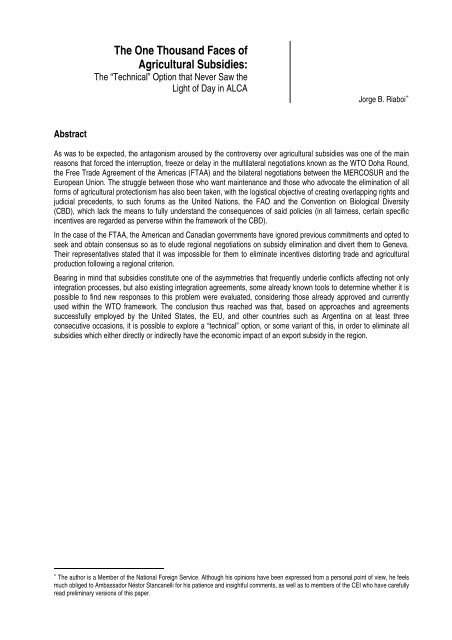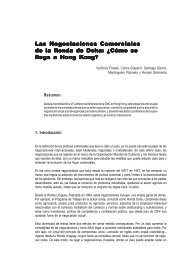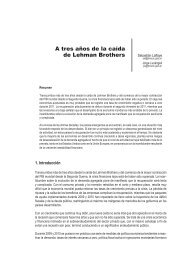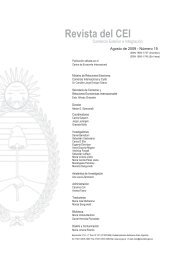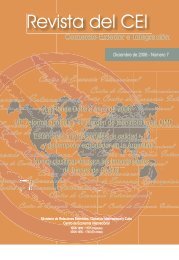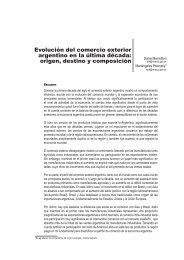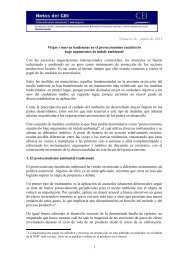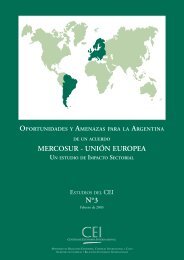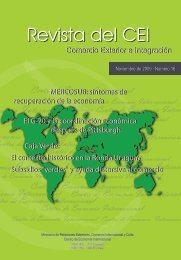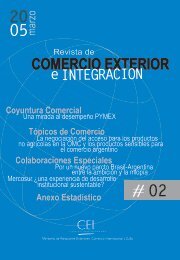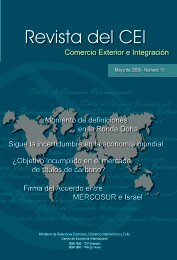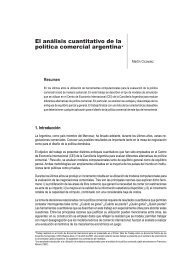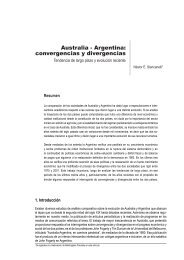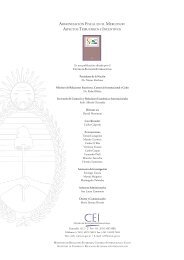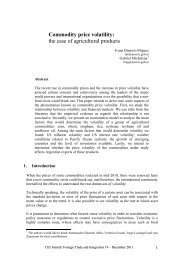Revista del CEI - Centro de EconomÃa Internacional
Revista del CEI - Centro de EconomÃa Internacional
Revista del CEI - Centro de EconomÃa Internacional
You also want an ePaper? Increase the reach of your titles
YUMPU automatically turns print PDFs into web optimized ePapers that Google loves.
The One Thousand Faces ofAgricultural Subsidies:The “Technical” Option that Never Saw theLight of Day in ALCAJorge B. Riaboi ∗AbstractAs was to be expected, the antagonism aroused by the controversy over agricultural subsidies was one of the mainreasons that forced the interruption, freeze or <strong><strong>de</strong>l</strong>ay in the multilateral negotiations known as the WTO Doha Round,the Free Tra<strong>de</strong> Agreement of the Americas (FTAA) and the bilateral negotiations between the MERCOSUR and theEuropean Union. The struggle between those who want maintenance and those who advocate the elimination of allforms of agricultural protectionism has also been taken, with the logistical objective of creating overlapping rights andjudicial prece<strong>de</strong>nts, to such forums as the United Nations, the FAO and the Convention on Biological Diversity(CBD), which lack the means to fully un<strong>de</strong>rstand the consequences of said policies (in all fairness, certain specificincentives are regar<strong>de</strong>d as perverse within the framework of the CBD).In the case of the FTAA, the American and Canadian governments have ignored previous commitments and opted toseek and obtain consensus so as to elu<strong>de</strong> regional negotiations on subsidy elimination and divert them to Geneva.Their representatives stated that it was impossible for them to eliminate incentives distorting tra<strong>de</strong> and agriculturalproduction following a regional criterion.Bearing in mind that subsidies constitute one of the asymmetries that frequently un<strong>de</strong>rlie conflicts affecting not onlyintegration processes, but also existing integration agreements, some already known tools to <strong>de</strong>termine whether it ispossible to find new responses to this problem were evaluated, consi<strong>de</strong>ring those already approved and currentlyused within the WTO framework. The conclusion thus reached was that, based on approaches and agreementssuccessfully employed by the United States, the EU, and other countries such as Argentina on at least threeconsecutive occasions, it is possible to explore a “technical” option, or some variant of this, in or<strong>de</strong>r to eliminate allsubsidies which either directly or indirectly have the economic impact of an export subsidy in the region.∗ The author is a Member of the National Foreign Service. Although his opinions have been expressed from a personal point of view, he feelsmuch obliged to Ambassador Néstor Stancanelli for his patience and insightful comments, as well as to members of the <strong>CEI</strong> who have carefullyread preliminary versions of this paper.


